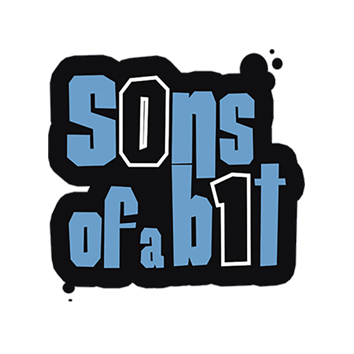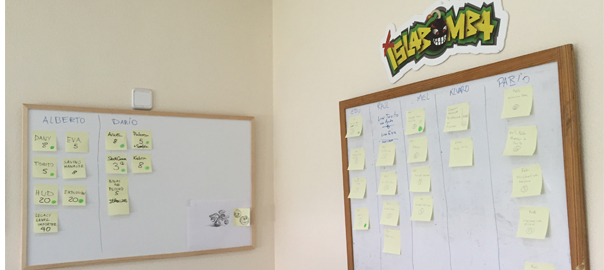We’ve been talking for weeks about the achievements we’ve been reaching thanks to port Islabomba from Unity 4 to Unity 5. We’re using this process to improve the game regarding the code, but also playability and graphics. Moreover, as we showed in our previous post, the current team of Sons of a Bit is the largest ever: programmers, 2D artists, animators y modellers, etc.
This number of people for such a small team as ours needs a conscientious planning for the machinery to function and avoid the dreaded bottleneks.
This week we’re talking about how we plan to take advantage of every single second of evey hour so you can have the final version of Islabomba as soon as possible. In order to do that, we must talk about the Scrum methodology.
With this method, we plan the tasks each team member is to carry out during a specific period of time. In our case, we focus on what we’re doing in the next two weeks. These periods of time are called sprints and are a real race against time to have all the tasks ready for the last day. This moment is used to share which tasks we’ve completed and which ones haven’t. Thanks to this process, we can learn from our errors in our planning so as to do it better next time.
In order not to set impossible goals, we must carry out Scrum meetings. These usually last from 2 to 4 hours and we use them to check what objectives we want to reach as a team, and different tasks and subtasks are assigned to each member. Next, all of us vote for the hours we think should be spent for each task through a system called Poker Planing (there are apps for iOS and Android which are very useful and free). If there’s no consensus, we start a dialogue to understand the diversity of opinions, as well as the possible obstacles the person will carry out the task may find in the next 2 weeks.En caso de que no haya consenso, iniciamos un diálogo para comprender la disparidad de opiniones, así como las complicaciones que pueden surgir en la realización de dicha tarea. So we vote again until we have a consensual number of hours.
Once the meeting with the tasks for that sprint has finished, we put post-its on boards with the name of each task, the hours stipulated by the team and the person who will carry it out. Every time one of us reaches one of these objectives, we mark that post-it with a big green dot, which sometimes provokes healthy competition to see who completes all their tasks.
Every day during the sprint, we hold a short meeting called “Daily Scrum” to know how each son of a bit is doing and share the difficulties they may have found so far. This is really helpful to learn from each other and to have a better understanding of the work all of us are trying to do.
Since we started to implement the Scrum methodology at Sons of a Bit, the development has accelerated significantly. For this reason, we strongly recommend this kind of planning. What about you? Have you ever used it? What do you think about it?


